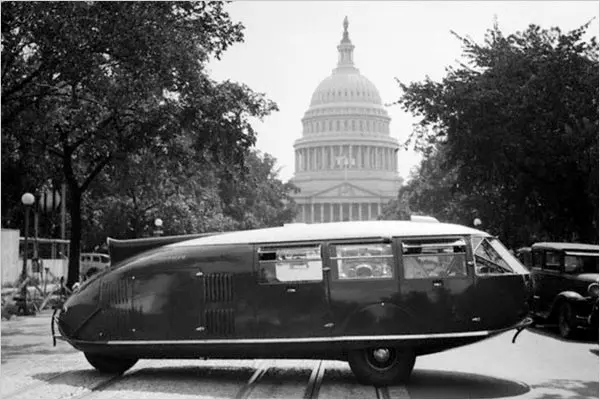In 1928 in Berlin (Germany), Engelbert Zaschka presented at his home the first folding car with 3 wheels: the Zaschka (of the same name as its designer), a crazy idea from the Roaring Twenties before the War.
Berlin inventor Engelbert Zaschka was already known as one of the first pioneers of the helicopter. His machine is a striking representative of the Rotationsflugzeug (Zaschka calls it “rotary plane”), his invention is patented.
Zaschka's three-wheeled vehicle is his second great invention, in which the principle of its tubular design is adopted. It can be assembled in just 20 minutes without any particular strength, two women can easily assemble and disassemble it as you can see this video made after its presentation
Zaschka's 3-wheeler was designed in three main sections and the vehicle therefore did not require a garage. Each section being built around a tubular frame with a canvas body stretched over the frame and clipped into position. The grille was just a dummy, as the air-cooled single-cylinder engine was located at the rear. The wheels were mounted without an axle and had a chain-driven rear wheel, and a one-cylinder air-cooled engine and allowed the vehicle to reach speeds of 25 to 30 miles per hour.
The promise of this vehicle is that you don't need to have a parking lot or garage to store it (metropolitan areas' space and parking problems were recognized in the 1920s), just take it apart and store it at home (in a cupboard or in the middle of your living room) and take it out if necessary. The other advantages of this cart are that it can be driven without a driving license and without tax exemption, strong arguments for thrifty buyers.
It was planned to market it at a competitive price which should not cost more than 1000 Reichsmarks. But the materials used were too expensive, it was not possible to make this possible. Another problem was that the vehicle was too heavy due to the materials used such as steel and wood. Of course, Zaschka wasn't the only one offering a cheap model at the time, and unlike him, the competition's products were better designed.
This concept will not be commercialized, only two copies were created, but its idea will be emulated.
A design principle which inspired, among others, the American Richard Buckminster Fuller to create his Dymaxion in 1933, another admirable creation!
It can also be considered the ancestor of the Czech Velorex and especially of its German competitors of the time, Tempo Hanseat and Borgward Goliath, small trucks powered by a two-stroke engine which after the war was sold under license to the 'India and produced with various modifications until the beginning of the 21st century. We still find this popular model in the Indian countryside.


























Commenti